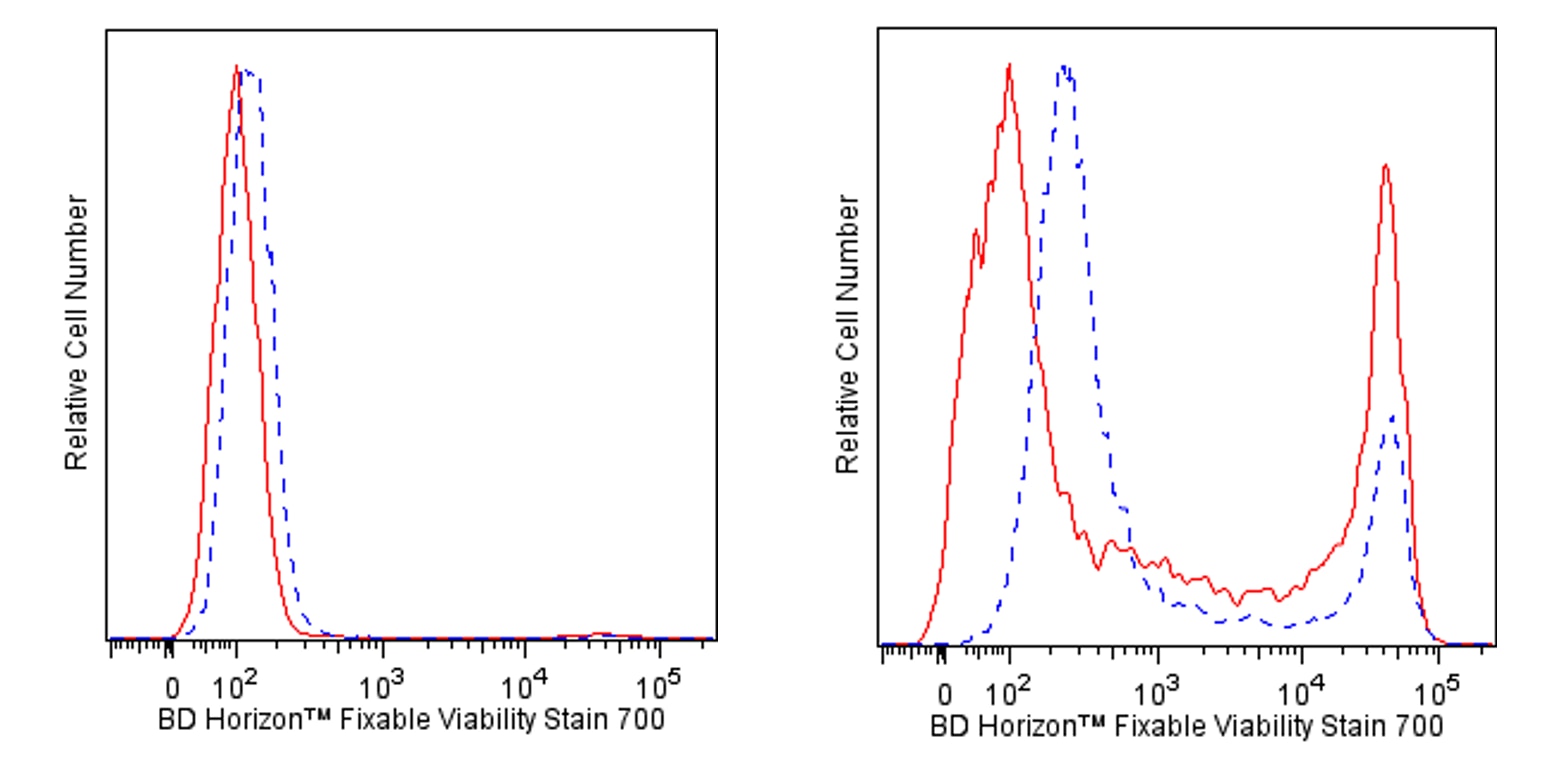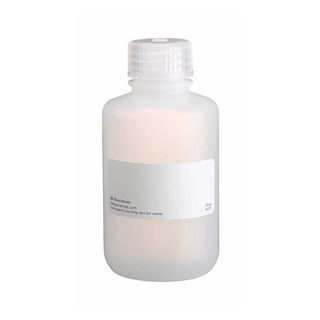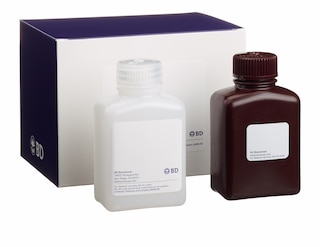-
Training
- Flow Cytometry Basic Training
-
Product-Based Training
- BD FACSDiscover™ S8 Cell Sorter Product Training
- Accuri C6 Plus Product-Based Training
- FACSAria Product Based Training
- FACSCanto Product-Based Training
- FACSLyric Product-Based Training
- FACSMelody Product-Based Training
- FACSymphony Product-Based Training
- HTS Product-Based Training
- LSRFortessa Product-Based Training
- Advanced Training
-
- BD FACSDiscover™ S8 Cell Sorter Product Training
- Accuri C6 Plus Product-Based Training
- FACSAria Product Based Training
- FACSCanto Product-Based Training
- FACSLyric Product-Based Training
- FACSMelody Product-Based Training
- FACSymphony Product-Based Training
- HTS Product-Based Training
- LSRFortessa Product-Based Training
- United States (English)
-
Change country/language
Old Browser
This page has been recently translated and is available in French now.
Looks like you're visiting us from {countryName}.
Would you like to stay on the current country site or be switched to your country?
BD Horizon™ Fixable Viability Stain 700
(RUO)


Flow cytometric analysis of human Jurkat cells stained with BD Horizon™ Fixable Viability Stain 700. Cells from the human Jurkat (Acute T cell leukemia, ATCC TIB-152) cell line were treated with 0.025% DMSO (Left Panel) or 5 μM camptothecin (Right Panel) for 16 hours and then stained with BD Horizon™ Fixable Viability Stain 700 (Cat. No. 564997) in serum-free buffer. The cells were then either left unfixed (solid line histograms) or fixed in BD Cytofix™ Fixation Buffer (Cat. No. 554655) and permeabilized in BD Phosflow™ Perm/Wash Buffer I (Cat. No. 557885, dashed line histograms). Histograms were derived from gated events with the forward and side light-scattering characteristics of Jurkat cells. Flow cytometric analysis was performed using a BD LSRFortessa™ Flow Cytometry System. Please note that FVS700 is also compatible with BD Phosflow™ Perm Buffer III (Cat. No.558050) or BD Pharmingen™ Transcription Factor Buffer Set (Cat. No. 562574/562725). Fixable Viability Stain 700 has been tested on mouse (data not shown).

BD Horizon™ Fixable Viability Stain 700
Regulatory Status Legend
Any use of products other than the permitted use without the express written authorization of Becton, Dickinson and Company is strictly prohibited.
Recommended Assay Procedures
Preparation
Bring FVS700 dye powder and 310 μl of fresh cell culture-grade Dimethyl Sulfoxide (DMSO; eg, Sigma D2650) to room temperature. Add 310 μl of DMSO and vortex solution well. Inspect the solution and repeat vortex until the stock dye has fully dissolved. This is the Stock Solution.
Storage
Upon arrival, store the dry dye desiccated and protected from light at -80°C until use. After reconstitution with DMSO, store the Stock Solution at -20°C in small aliquots. Do not use reconstituted dye after 90 days of storage. Please discard the dye solution after 90 days post reconstitution with DMSO.
Cytometry Requirements
Red laser-equipped Flow Cytometers (eg, BD FACSCanto™ II, BD LSRFortessa™, or BD LSR™ II) can be used. This dye can be read out of filters commonly used for BD Horizon™ APC-R700 or Alexa Fluor® 700 (eg, 730/45- or 712/21-nm filter). Fluorescence compensation is best achieved using stained and unstained samples of the cells of interest.
Procedure
Fixable Viability Stain 700 labeling of cells
1. Prepare cells for flow cytometric staining using sodium azide-free buffers.
2. Wash cells one time in sodium azide- and protein-free Dulbecco's Phosphate Buffered Saline (1X DPBS).
3. Resuspend cells at 1-10 x 10^6 cells/ml in sodium azide- and protein-free 1X DPBS.
4. Add 1 μl of BD Horizon™ Fixable Viability Stain 700 Stock Solution for each 1 ml of cell suspension (1:1000) and vortex immediately.
a. Note: We recommend titrating the dye for optimal performance as different cell types and different applications can result in a wide degree of variability in staining. Please see Note 1 below for guidance on recommended ranges.
5. Incubate the mixture for 10-15 minutes at room temperature or 2-8°C protected from light.
a. Optional: Alternatively, incubate mixtures at 37°C for 5-7 minutes.
6. Wash cells twice with 2 ml of BD Pharmingen™ Stain Buffer (FBS) (Cat. No. 554656) or the equivalent.
7. Decant the supernatant and gently mix to disrupt the cell pellet.
8. Resuspend the cells in Stain Buffer (FBS) or equivalent.
9. Stain, fix and permeabilize cells as desired for downstream applications.
Notes:
1. Each user should determine the optimal concentrations of reagents, cells, and conditions for the assay of interest. We recommend titrating the reagent in early experiments to obtain optimal results. The following are ranges that we have found to work for various cell systems:
a. Erythrocyte-Lysed Whole Blood Cells: 1:1,000 from the Stock Solution.
b. Primary Cells: 1:1,000 - 1:4,000 from the Stock Solution.
c. Cell Lines: 1:4,000 - 1:10,000 from the Stock Solution.
2. The reactivity of the free dye is quenched by washing with buffer containing protein (eg, FBS or BSA).
3. Cells may be stained in bulk prior to freezing or staining with fluorescent antibodies.
4. BD Horizon™ Fixable Viability Stain 700 can be used in intracellular staining assays that require fixation with formaldehyde and permeabilization with methanol and detergents such as those used for BD Phosflow™ staining (eg, BD Phosflow™ Perm Buffer III, Cat. No. 558050), intracellular cytokine staining (eg, BD Cytofix/Cytoperm™ Fixation/Permeabilization Solution Kit, Cat. No. 554714), or transcription factor staining (eg, BD Pharmingen™ Transcription Factor Buffer Set, Cat. No. 562574/562725).
5. Apoptotic cells can show variable staining. We recommend co-staining with other fluorescent probes such as Annexin V FITC (Cat. No. 556419) if further analysis is desired for the apoptotic cells.
Product Notices
- Since applications vary, each investigator should titrate the reagent to obtain optimal results.
- For fluorochrome spectra and suitable instrument settings, please refer to our Multicolor Flow Cytometry web page at www.bdbiosciences.com/colors.
- Alexa Fluor® is a registered trademark of Molecular Probes, Inc., Eugene, OR.
- Before staining with this reagent, please confirm that your flow cytometer is capable of exciting the fluorochrome and discriminating the resulting fluorescence.
- Please refer to www.bdbiosciences.com/us/s/resources for technical protocols.
Companion Products






BD Horizon™ Fixable Viability Stain 700 (FVS700) is useful for discrimination of viable from non-viable mammalian cells in multicolor flow cytometric applications. This dye reacts with and covalently binds to cell-surface and intracellular amines. Permeable plasma cell membranes, such as those present in necrotic cells, allow for the intracellular diffusion and covalent binding of the dye to the higher levels of total cellular amines when compared to living cells with impermeable plasma membranes. Therefore, necrotic cells present in a typical in vitro assay label with higher levels of dye increasing their FVS700 fluorescence intensities 10-20 fold over that of viable cells. The FVS700-labeled cells can be fixed with formaldehyde for downstream decontamination, freezing and/or permeabilization and subsequent intracellular staining while maintaining stable viability stain fluorescence.
BD Horizon™ Fixable Viability Stain 700 is excited by the Red laser (with an excitation maximum of 657 nm), and has a fluorescence emission maximum of 700 nm.
Development References (5)
-
Abrams B, Diwu Z, Guryev O, et al. 3-Carboxy-6-chloro-7-hydroxycoumarin: a highly fluorescent, water-soluble violet-excitable dye for cell analysis. Anal Biochem. 2009; 386(2):262-269. (Methodology). View Reference
-
Burmeister Y, Lischke T, Dahler AC, et al. ICOS controls the pool size of effector-memory and regulatory T cells. J Immunol. 2008; 180(2):774-782. (Methodology). View Reference
-
Charles ED, Green RM, Marukian S, et al. Clonal expansion of immunoglobulin M+CD27+ B cells in HCV-associated mixed cryoglobulinemia. Blood. 2008; 111(3):1344-1356. (Methodology). View Reference
-
Perfetto SP, Chattopadhyay PK, Lamoreaux L, et al. Amine reactive dyes: an effective tool to discriminate live and dead cells in polychromatic flow cytometry. J Immunol Methods. 2006; 313(1–2):199-208. (Methodology). View Reference
-
Perfetto SP, Chattopadhyay PK, Lamoreaux L, et al. Amine-reactive dyes for dead cell discrimination in fixed samples. Curr Protoc Cytom. 9(9.34)(Methodology). View Reference
Please refer to Support Documents for Quality Certificates
Global - Refer to manufacturer's instructions for use and related User Manuals and Technical data sheets before using this products as described
Comparisons, where applicable, are made against older BD Technology, manual methods or are general performance claims. Comparisons are not made against non-BD technologies, unless otherwise noted.
For Research Use Only. Not for use in diagnostic or therapeutic procedures.
Report a Site Issue
This form is intended to help us improve our website experience. For other support, please visit our Contact Us page.